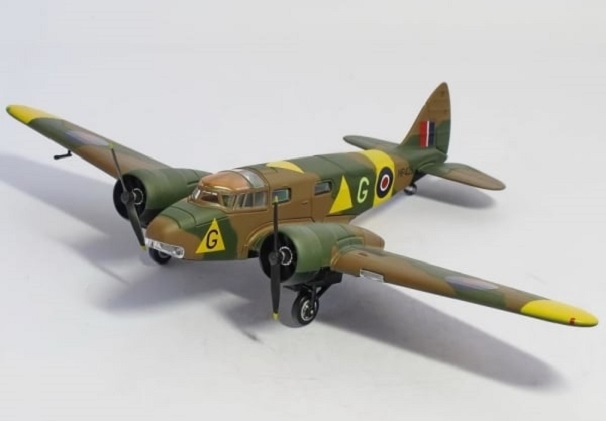Airspeed Oxford – MP425 (G-AITB), Preserved, RAF Museum Hendon 1/72
Add to compare1 in stock
£25.00 £34.99
1 in stock
72AO001 Oxford Diecast 1/72 scale Airspeed Oxford MP425 (G-AITB), preserved at the RAF Museum Hendon.
The Airspeed AS.10 Oxford is a twin-engine aircraft used for training British Commonwealth aircrews in navigation, radio-operating, bombing and gunnery during the Second World War.
The Oxford (nicknamed the ‘Ox-box’) was used to prepare complete aircrews for RAF Bomber Command and could simultaneously train pilots, navigators, bomb-aimers, gunners and radio operators on the same flight. In addition to training duties, Oxfords were used in communications and anti-submarine roles and as ambulances in the Middle East.
The Oxford was the preferred trainer for the Empire Air Training Scheme (EATS) and British Commonwealth Air Training Plan (BCATP), which sent thousands of potential aircrew to Canada for training. Twenty seven Oxfords were on the strength of No 4 Flying Training School RAF Habbaniya, Iraq in early 1941 and some were converted locally, for use as light bombers to help in the defence of the School against Iraqi forces.
In 1941, the aviatrix Amy Johnson went missing in an Airspeed Oxford, presumably crashing into the Thames Estuary.After the war, 152 surplus Oxfords were converted into small 6-seat commercial airliners called the AS.65 Consul. A few Oxfords were acquired by the Hellenic Air Force and used during the Greek Civil War by No. 355 Squadron RHAF.
Although the Oxford was equipped with fixed-pitch wooden or Fairey-Reed metal propellers, the cockpit contained a propeller pitch lever, which had to be moved from “Coarse” to “Fine” for landing. This was to reinforce this important step for trainee pilots. Oxfords continued to serve the Royal Air Force as trainers and light transports until the last was withdrawn from service in 1956. Some were sold for use by overseas air arms, including the Royal Belgian Air Force.
No Oxfords are in airworthy condition however there are restoration-to-fly projects in New Zealand, as well as components held by several private individuals and the RNZAF Museum for possible incorporation into future rebuilds. Museum survivors include, Oxford I 016/MP455 on display at the Brussels War Museum, Oxford I MP425/G-AITB on display at the Royal Air Force Museum London, Hendon, and Oxford I V3388/G-AHTW on display at the Imperial War Museum, Duxford.
| Weight | 0.9 kg |
|---|

